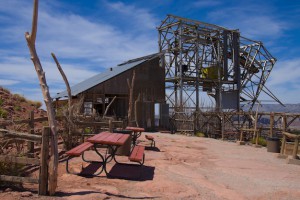When we think about the history of the Grand Canyon, the first thing that might come to mind is its incredible geological history or even the evolution of wildlife in the area. A complete history of the Canyon would be incomplete, however, without taking its human history into account. It is said humans have been in and around the area of the Grand Canyon for up to 12,000 years, with Native Americans being the first inhabitants.
The Canyon’s First Human Inhabitants
Paleo-Indians, known as the first known human inhabitants of the Grand Canyon, left behind few artifacts indicating their presence in the Canyon. Thanks to a few rare discoveries and the use of carbon dating however, we know they existed and that they hunted big game in the area.
The Ancestral Puebloan people, known as “Basketmakers” moved into the area around 500 AD. Historically a nomadic people, they settled in the Canyon cultivating corn, hunting game and continuing their basket making traditions.
By the late 1200’s, Native Americans in the Grand Canyon appeared to have abandoned their homes, leading many historians to believe a drastic event, such as an extended drought, prompted their departure from the area.
Approximately a century later, the Southern Paiutes and Cerbat, ancestors of today’s Havasupai and Hualapai Tribes, began settling in the region. The Navajo tribe followed suite a century later.
Early Explorers
Aside from futile attempts to find gold and riches within the Canyon, the first legitimate exploration of the Grand Canyon took place in the mid-1800’s. Spurred on by a U.S. Government who wanted to know more about the land it was acquiring, an expedition was commissioned the U.S. Army. It was led by Lieutenant Joseph Ives, who ultimately determined the region to be “altogether valueless” and a “profitless locality.”
Unconvinced, John Wesley Powell set out to explore the area mere 10 years later. A Civil War veteran with one arm, Powell and his crew of 9 men tackled the rocky terrain and eventually became the first men to travel 1,000 miles through the Canyon and raft the Colorado River in 1869. Later, Powell and his crew returned to the area, eventually gathering a smattering of invaluable information about the area. Powell later founded the U.S. Geological Survey and the U.S. Bureau of American Ethnology. Lake Powell is named in his honor.
Mining the Mighty Canyon

A full account of the human history as it relates to the Grand Canyon would be incomplete without acknowledging the mining that occurred in the 1870’s and 1880’s. Upon the discovery of areas yielding copper, zinc, lead and asbestos, minors flocked to the area in an attempt at cashing in on the resources. As one might imagine, the mining was difficult and later abandoned. A far more profitable venture was dreamed up, paving the way for a modern day Grand Canyon – tourism.